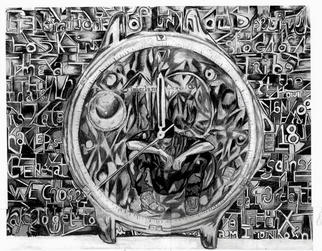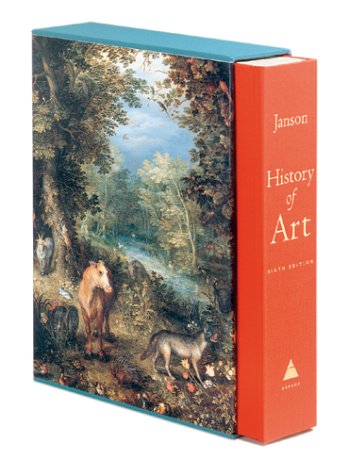Through Time

|
Through Time |
 |
 ;
;
[INTRO] [MISSION] [PROCESS] [EXAMPLES] [EVALUATION] [CONCLUSION]
INTRODUCTION [TOP OF PAGE]
Middle school students can explore aspects of art history through many art movements that have occurred over time. They will discover facts about artists and the meanings of their pieces as well as the process behind their works. The students will be learning about key artists of the time and be given examples that will help them in their exploration for more information about the artists and their works.
MISSION [TOP OF PAGE]
For each of the following movements, define the movement, find a painting, and research the meaning or the process used to create the painting. Write a summary paragraph about the artist's life.
[Neoclassicism]
[Romanticism]
[Pointillism]
[Symbolism]
[Expressionism]
[Surrealism]
[Abstract]
[Fantasy]
Before beginning the project print off the worksheet that will be filled out and turned in.
PROCESS [TOP OF PAGE]
Schedule is subject to change
|
Art Movement
|
Due Date
|
| Neoclassism | Sept. 30th |
| Romanticism | Oct 20th |
| Impressionism | Nov. 10th |
| Pointislism | Dec. 1st |
| Symbolism | Jan.10th |
| Expressionsim | Feb. 1st |
| Surrealism | Feb. 20th |
| Abstract | March 10th |
| Fantacy | April 1st. |
FINAL PRESENTATION MAY 1st
1.) For each art movement, print out a copy of the worksheet. Fill out the worksheet in Microsoft Word and print off a final copy to turn in.
2.) Read the examples given below to see what is expected.
3.) You will then:
A. Research the time period
I. When did the movement begin/end.
II. Define the movment. What was it all about? How was it described?
B. Find a work of art from the era that intrests you. Use any resources that you would like.
*Internet
*Books
*Museums
I. Print off a copy of the chosen piece of art.
C. Research your piece of art
I. How was it created?
II. What was the artist trying to convey?
III. Does it depict any historical event of influence by the time period? If so.. In what way?
IV. Why did you choose it? Did you like or dislike it? Why?
D. Research the artist of your artwork.
I. Who was this man/woman?
II. When were they born? Where were they from? When did they die?
III. What was their life like?
IV. What were they known for?
E. At the end of the year, you will be choosing your favorite work of art and artist and sharing your knowledge about the subject. This will be done through a formal presentation which must be at least three minutes in length.
EXTRA CREDIT*****
1. Make your final presentation on Power Point
Have fun playing in Power Point Picture Maker. *Print off Power Point presentation for extra credit.
EXAMPLES [TOP OF PAGE]
Neoclassicism
Romanticism
Pointillism
- DEFINITION - The theory
or practice in the art applying small strokes or dots of color on a surface
so that from a distance they blend together. TIME PERIOD - about the 1880's
- ABOUT THE MOVEMENT - Pointillism artists such as Seurat did not work as other
artists. Instead of working with objects in their composition individually they
began at one corner of the canvas and slowly and painstakingly worked their
way outward from this single point. They approached the work as a whole rather
than a grouping of many individual objects. Seurat spent more than a year on
this painting, making many primary studies before tackling the final version.
Each dot is placed with meticulous precession. This detail creates a beautiful
composition of color and harmony of lines. - ABOUT THE ARTIST - George Seurat
(1859 - 1891) was known for using tiny brushstrokes of casting colors. He spent
his life studying color theories.
view painting
Symbolism
- DEFINITION - an object or act repressing something in the unconscious mind
that has been repressed. TIME PERIOD - about the 1880's - 1890's. ABOUT THE
MOVEMENT - This composition was promoted by the air raids in Guernica in Northern
Spain by the German Lufwaffe in 1937. Hundreds of civilians were killed. The
painting expresses the tragedy and chaos of the event. It explores the horror
of war and gives an erie foreshadowing of the suffering to come with W.W.II.
Picasso used many layers to create this piece. The symbolism and hidden imagery
has puzzled scholars for many years. Picasso refused to divulge the secret hidden
within this painting because of this it is often called Picasso's "secret"
Guernica. ABOUT THE ARTIST - Pablo picasso (1881 - 1973) A rebel from a young
age, refused to explain the real meaning of his paintings. He later turned to
sculptures and pottery.
view painting
Expressionism
- DEFINITION - a theory of practice in the art of seeking to depict the subjective
emotion and responses that objects and events arouse in the artist. TIME PERIOD
- about 1905 - 1925. ABOUT THE MOVEMENT - Starry Night is one of Van Gough's
most famous paintings because of it's unique style. He painted it from memory
while in an asylum at Saint-Remy. He was going through a very difficult period
and had very erratic behavior at this time. Van Gough would not discuss this
work in any detail for reasons known only to him. Many have speculated about
the meaning. ABOUT THE ARTIST Vincent Van Gough-(1853-1890) He was born in Groof
Zundert. He was a famous expressionistic artist. He lived with a life of psychological
problems and depression. He had a brother named Theo who he lived with when
he was in Paris. In the end he committed suicide.
view painting
Surrealism
- DEFINITION - movement that began in France that explored the unconscious,
often using images from dreams. It used spontaneous techniques and featured
unexpected juxtaposition of objects. TIME PERIOD - about the 1920's and 1930's. ABOUT
THE MOVEMENT - This painting has been describes as "a paranoid dream",
where time and space are distorted in a frighteningly convincing way. Dali played
with the idea of hard vs. soft and the physical world vs. time. Shadows, visual
clarity, and minaturism are all used as told to create this image. ABOUT THE
ARTIST - Salvador Dali (1904-1989) He was known as the greatest surrealist artist
because of his bizarre dream imagery.
view painting
Abstract
Fantasy
EVALUATION [TOP OF PAGE]
grading
rubric for
completed worksheet
Art
History Quiz
CONCLUSION [TOP OF PAGE]
art
word. find
create
your own masterpiece
Mediography:
http://www.artcylopedia.com/artist/dali_salvador.html
http://www.artchive.com/artchive/P/Picasso.html
http://www.english.uga.edu/~232/voc/neoclassicism.voc.html
http://www.m-w.com/cgi-bin/dictionary.book
http://www.mcs.cushayward.edu/~malek/Braque.html
http://www.peak.org/~dadaist/English/Graphics/duchamp.html
http://www.ibiblio.org/wm/paint/auth/david
http://www.european paintings.com/19thcent/girodnor.html
http://www.ibiblio.org/wm/paint/auth/whistler
http://www.ibiblio.org/wm/paint/auth/seurat
http://www.ask.elibrary.com
http://www.gifs.net/animate/feet.gif
http://www.allposters.com
Resources:
Janson, Anthony F. &
H. W. Janson History of Art. Harry N. Abrams; INC. New York. 2001
Related Links:
http://witcombe.sbc.edu/ARTHLinks.html
Suggested Books:

History of
Art By: Anthony Janson & H. W. Janson
(in the search box type art history and
select books)

History
of Art For Young People By: Anthony Janson & H. W. Janson
(in the search area type art
history and select books)